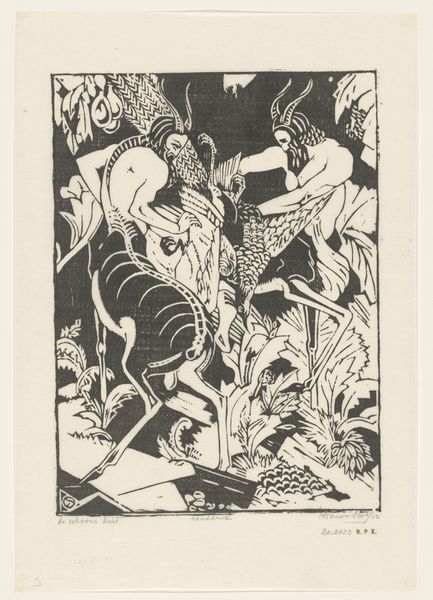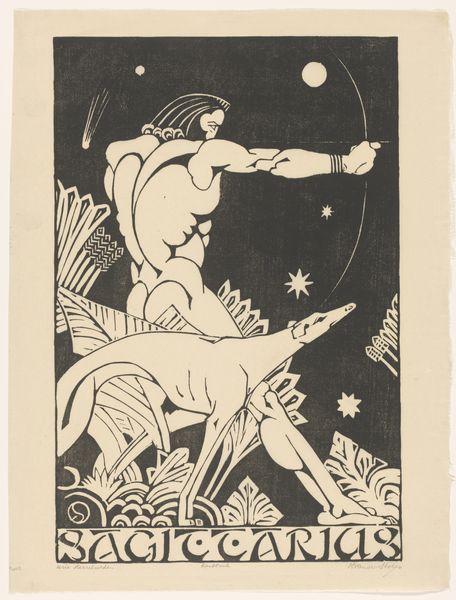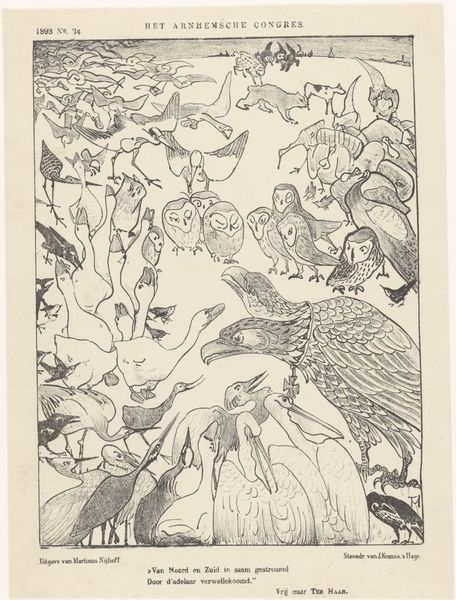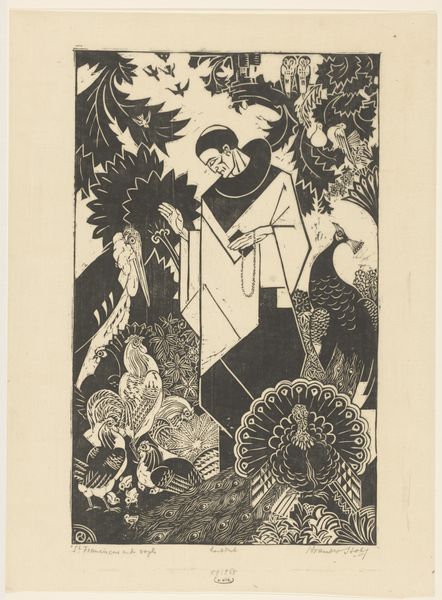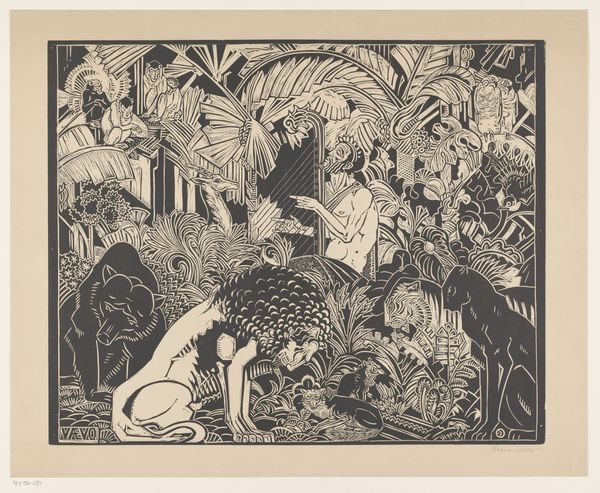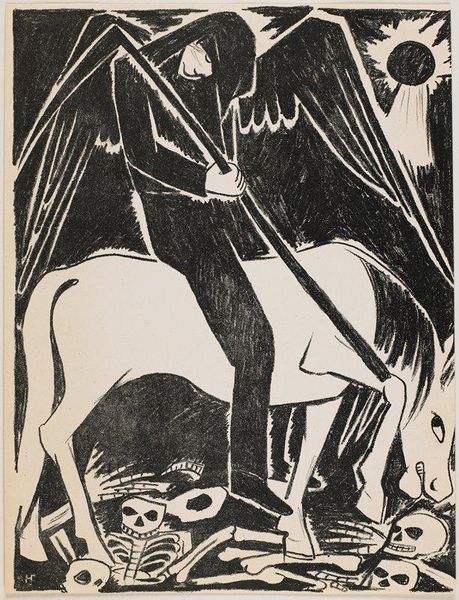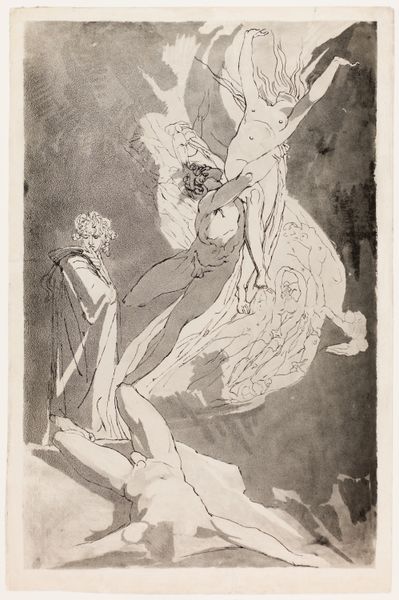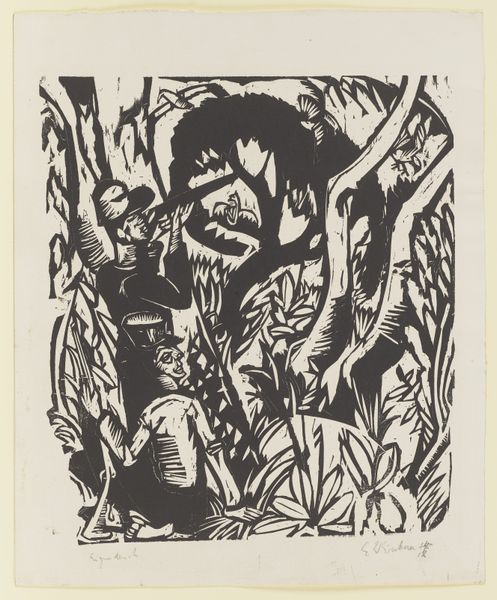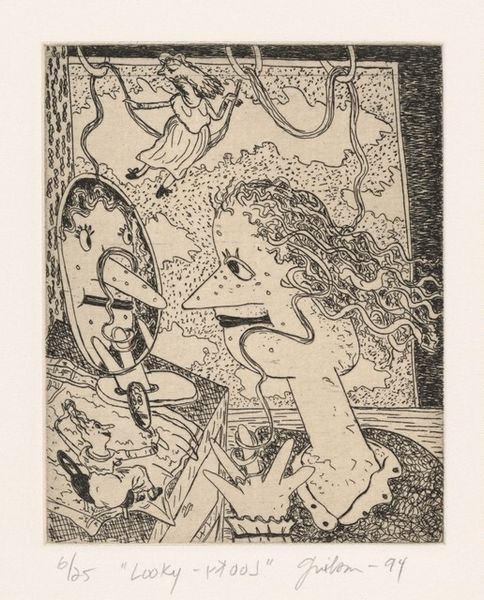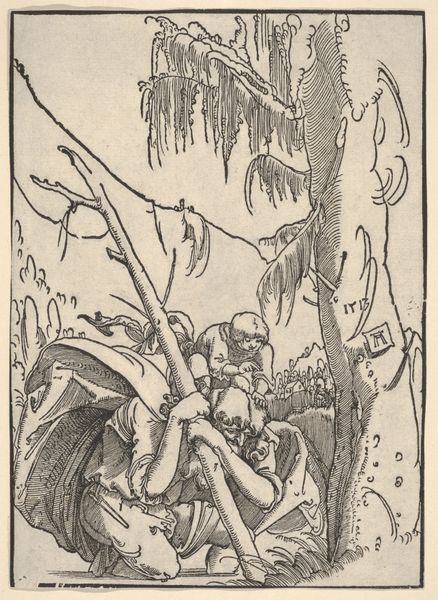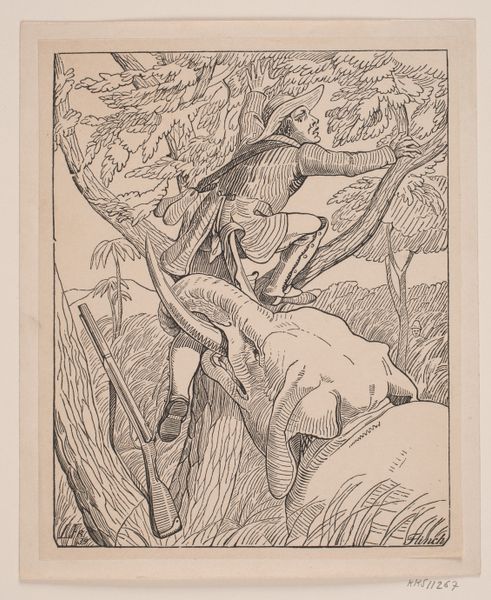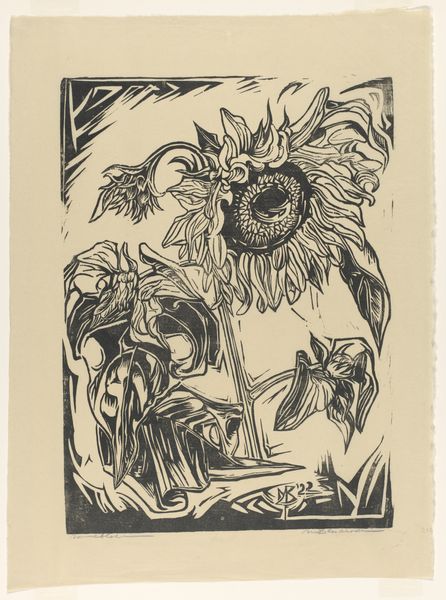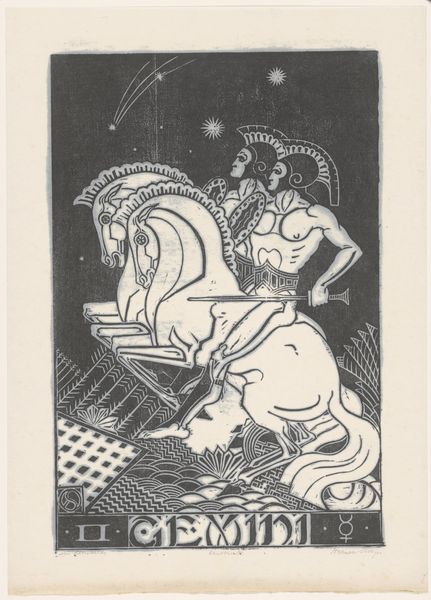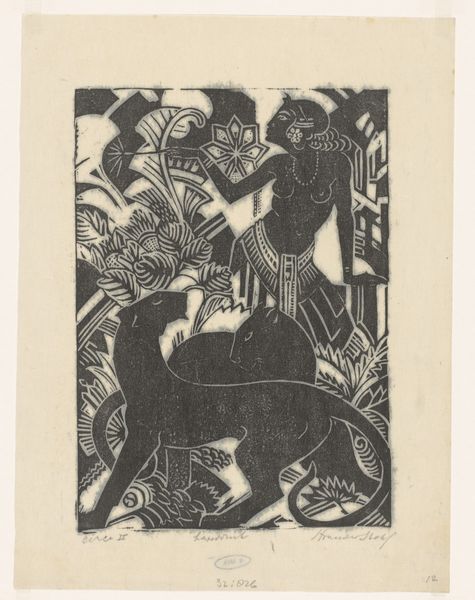
print, woodcut, engraving
#
art-nouveau
#
narrative-art
# print
#
pen illustration
#
figuration
#
woodcut
#
engraving
Dimensions: height 391 mm, width 328 mm
Copyright: Rijks Museum: Open Domain
Curator: Here we have "De drakendooder", or "The Dragon Slayer," a print created between 1880 and 1920, currently held here at the Rijksmuseum. It is by Henri van der Stok. Editor: Immediately striking! It has a raw, forceful energy. The stark black and white really amplifies the drama of the scene. What's your take? Curator: I'm fascinated by how it blends medieval legend with Art Nouveau sensibilities. We see St. George, locked in combat with the dragon, a timeless struggle rendered with the flowing lines characteristic of the era. It speaks to anxieties about tradition. Editor: Absolutely. Look at the way he has cut the wood – such confident lines forming dynamic shapes, like the horse’s mane and the dragon's coils. The materiality itself is part of the message: a hand-crafted, affordable medium bringing high-minded allegory to a wider audience. Curator: Precisely. Van der Stok positions himself in a climate wherein the distribution of knowledge and art becomes important. The graphic arts are about reproduction and, consequently, accessibility, compared to painting and sculpture which require specialist access. The narrative, though classic, finds a new, democratized platform. Editor: The negative space too, is almost as potent as the ink. That contrast creates this intense push and pull – chaos and order battling it out. Did that play into any cultural commentary at the time, do you think? Curator: Indeed, we see growing awareness of social injustices at this moment. In many respects, this mirrors anxieties that came along with industry and a rapidly changing public landscape, as old class dynamics changed through mass production and consumption. It’s an appeal to established forms, but rendered through accessible, modern modes of distribution. Editor: So it's this fascinating blend – the artist deliberately choosing printmaking to speak to societal shifts, mass culture, and perhaps make a statement on accessibility and artistry. Curator: Exactly. By understanding this, we appreciate not only Van der Stok's artistry but also how cultural shifts influenced and shaped artistic creation. Editor: Makes you look at those heroic narratives a bit differently. I am reminded to think critically about access, tools, and material processes.
Comments
No comments
Be the first to comment and join the conversation on the ultimate creative platform.
